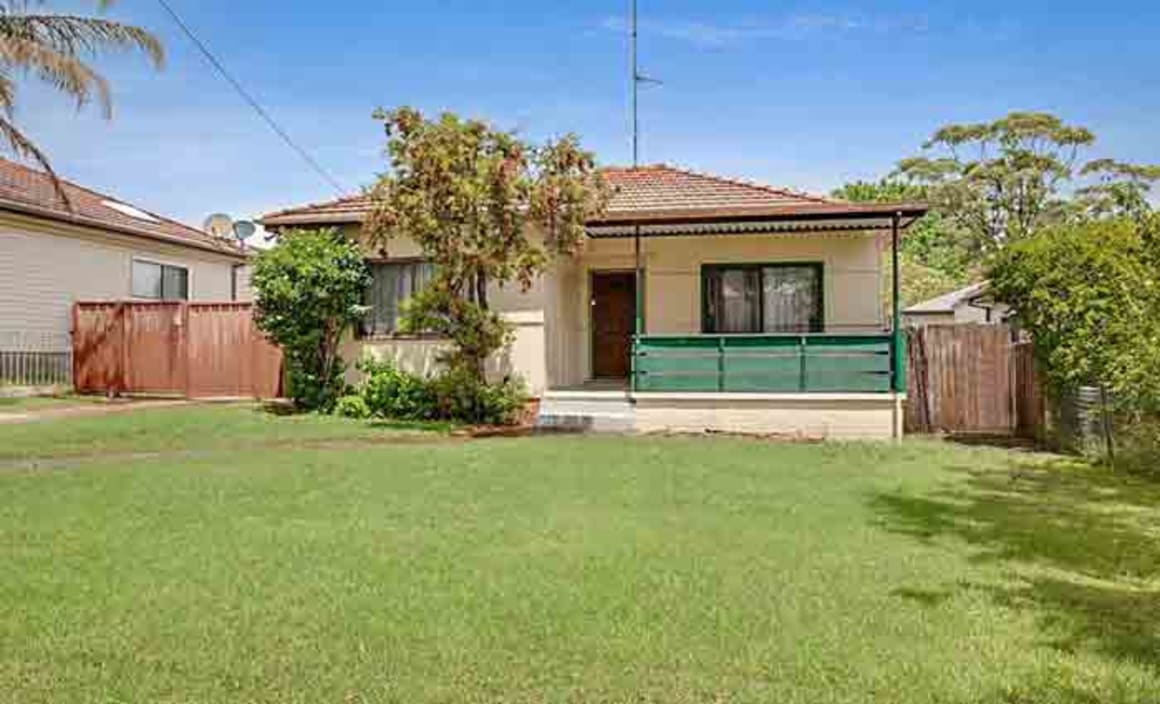Positive gearing the prospect with granny flat on Bland Street, Bradbury

A $488,000 sale of a two bedroom fibro on 600 sqm at Bradbury was the cheapest among recent weekend auctions.
Selling to an investor, it suggested the headlines around the negative gearing policy debate had failed to unnerve strong buying interest.
Some four of the five registered parties were investors.
But it's selling agent Russell Wyer from Richardson & Wrench Campbelltown suggested the investor interest was more likely to be directed towards the prospect of positive gearing than negative gearing.
He thought the acquisition lent itself to the addition of a granny flat in its vast back yard on Bland Street.
He envisaged a doubling in rental income to around $650 a week after the $100,000 plus outlay on the granny flat.
The pursuit of positive gearing by many conservative investors has been somewhat overlooked in the debate that has followed the unveiling of the federal opposition's policy to restrict negative gearing to new properties and raise the tax on any sale.
There's complexity around the investment terms and ofcourse it’s not the property that determines whether an investment is negative or positive.
What is a positively geared property for one could be a negatively geared one for another, due to different income tax circumstances.
Basically a property with negative cashflow means the rental income does not cover all the outgoing costs, so this loss helps reduce a person’s overall tax liability.
The gearing aspect means that the property has been bought using finance with the loan repayments adding to the outgoings.
Leaving personal tax considerations aside, negatively geared property is a loss making situation.
But the investor's expectation is for the value of the property to increase to cover the annual losses.
And they might also anticipate future rental income will increase sufficiently to cover the losses.
The big risk with a negatively geared property is that its value may not increase sufficiently to cover the loss especially if interest rates rise.
There’s also now the prospect raised by Labor of hiking the tax on any capital gains.
According to property research and investment firm Aviate Group managing director Neil Smoli it typically takes five to six years for an investment property to become neutral, that is, for the rent received to balance the interest payable.
"This is influenced by the interest rate of the day, the net rental income received after costs, the investor’s marginal tax rate as well as depreciation allowances,” he said.
He argues any reform should take a long-term view and classify ‘new’ stock as any property up to 10 years old so as not to pull the rug from under the feet of investors abruptly.
“A timeline of this duration for the investor to be able to use negative gearing seems logical and fair.”
This article was first published in the Saturday Daily Telegraph.